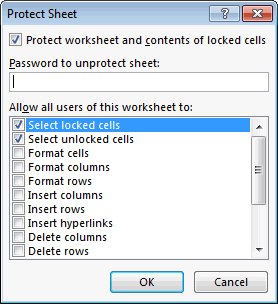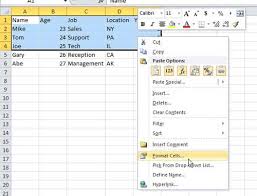

But some data can’t be split by this wizard. The Text to Columns Wizard works very well for many types of data. If your data changes, columns created by Flash Fill do not update automatically (you must use a formula to update automatically then). Note 3: The main limitation of using Flash Fill is, Flash Fill is not a dynamic technique. But then again, it’s also easier to create formulas to create data from existing columns :). Using Flash Fill to create data seems to work much better than using it to separate data. To do this, just provide a few examples of how you want the data combined, and Excel will figure out the pattern and fill in the column automatically. Note 2: Flash Fill feature can also be used to create new data from multiple columns. All the names will be 3 parts or 2 parts or 4 parts or ‘n’ parts. For now, check the box marked “Protect worksheet and contents of locked cells.” Make any other adjustments you wish and click “OK” to protect the sheet.Note1: Names you select must be of the same pattern. In the “Protect Sheet” menu, you can create a password to protect the sheet and select a number of different parameters. In the ribbon under the “Review” tab, select “Protect Sheet.” In the Excel ribbon toolbar, click “Review.”

That’s because, in order for locking cells to work, you must also protect your sheet or workbook. Protecting the SheetĪfter you lock the cell, you’ll notice that it still lets you change the text or delete content. Once you’ve finished locking your cells, you need to protect your workbook. If you ever need to unlock them, perform the steps above in reverse.

This performs the exact same function as locking cells in the format tab.Īfter that, your cells are locked. In the “Protection” tab, click the checkbox that says “Locked” to enable cell locking. In that menu, select “Format Cells.” In the “Format Cells” box, click the “Protection” tab. An alternative way to lock cells is to select your cells, then right-click them to bring up a menu.


 0 kommentar(er)
0 kommentar(er)
